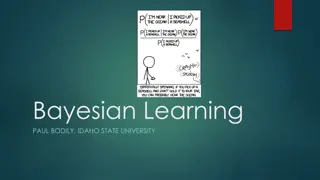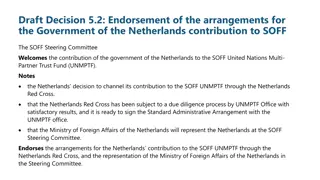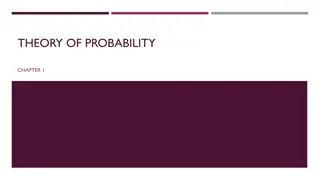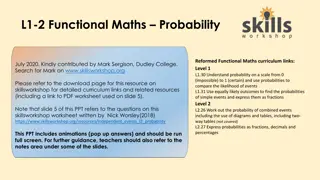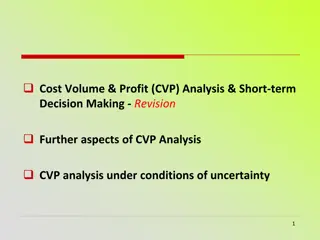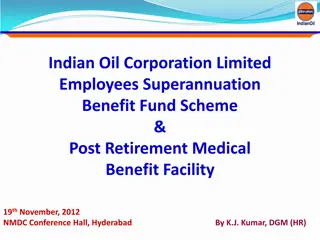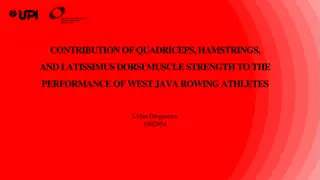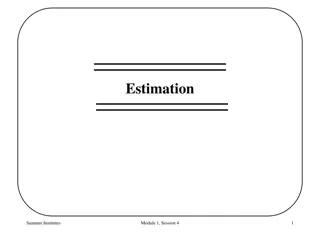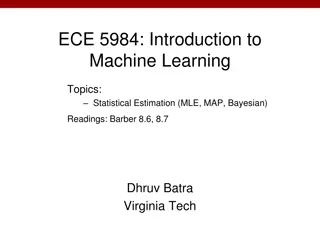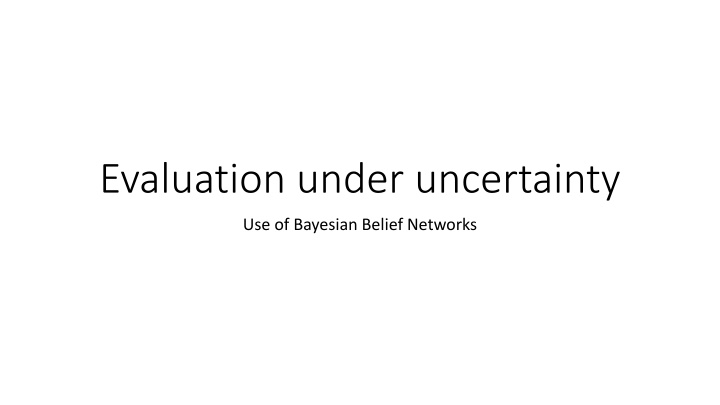
Bayesian Belief Networks for Evaluating Uncertainty in Program Effectiveness
Explore the use of Bayesian belief networks to evaluate the effectiveness and value for money of programs facing uncertainty and non-linear results in the medium to long term. Addressing challenges in assessing outcomes, the talk delves into evaluating likelihoods and value for money under uncertainty.
Download Presentation

Please find below an Image/Link to download the presentation.
The content on the website is provided AS IS for your information and personal use only. It may not be sold, licensed, or shared on other websites without obtaining consent from the author. If you encounter any issues during the download, it is possible that the publisher has removed the file from their server.
You are allowed to download the files provided on this website for personal or commercial use, subject to the condition that they are used lawfully. All files are the property of their respective owners.
The content on the website is provided AS IS for your information and personal use only. It may not be sold, licensed, or shared on other websites without obtaining consent from the author.
E N D
Presentation Transcript
Evaluation under uncertainty Use of Bayesian Belief Networks
The challenge we faced Evaluate now the effectiveness and value for money of a programme where results are uncertain and non-linear results realised in the medium- to long-term (+5-7 years) if at all programme contribution = small (but hopefully significant) Programme contribution is heavily conditioned by other factors Easily observable objective data for changes promoted not readily available Tackled the problem from several angles this talk is about one aspect: use of Bayesian belief networks
Where the challenges led us A strong conception of likelihood Subjective data need to be treated with transparency and rigour Ditto issues of strength of influence and uncertainty Theory of change a useful model But acknowledge packages of influencing factors [establishing the joint- probabilities] [INUS combinations] Suggests the BBN approach would be interesting
Evaluating likelihoods Certain outcomes/impacts can only be understood/examined as increased or decreased likelihoods e.g. Interventions that try to lower the chance of a species extinction Looking to raise the likelihood of establishing an effective transboundary management mechanism for an international river Reducing the expected number of fatalities caused by some kind of natural disaster (were it to happen)
VFM under uncertainty Donors have comparative advantage in bearing risk in trying to unlock real-world, complex collective action problems ( wicked issues). Interest in VFM is legitimate but shouldn t (perversely) stop them from doing this Where success is very uncertain, failure cannot automatically equate to poor VFM => Need a better handle on (at least) two key elements: the likelihood of success; and funder s appetite for failure (risk)
ToC <-> Influence map Quasi-theory based testing whether the programme s stated theory was valid, to what extent and in which areas was it stronger/weaker we knew that the programme was not going to cause the result but influence things that advanced the cause a way to link those things and aggregate influences Transforms to the influence map [link to fuzzy cognitive mapping]
The analytical engine The approach has two elements The influence map (a network) The likelihoods/probabilities (a table) Extracting the Bayesian style reasoning These are conditional probabilities They include everything else that is going on not specifically defined on the map (important for contribution analysis) These are both created based on the (largely) subjective data gathered from stakeholders
Some example findings /cont
Some example findings /cont
The generalised features where this can be useful For programmes where on-going, long time frame [value for developmental evaluation] complex causal chains multiple aspects of intervention high uncertainty about what/works what to learning on programme and M&E But also more conventional ex post contribution analysis what contribution did the whole and/or certain elements make? Can talk about how great or small the contribution may be Understanding individual and joint contributions to results and fiddle around with that (sensitivity, scenarios, sub-intervention elements ) overlay cost data examine marginal returns for different areas of effort
In perspective Method in no way presents what will happen/has happened a tool to examine in detail! what people s beliefs to tell us about what is/was important, what are the chances of success, etc One-time, ex post exercise can yield insights but value comes in repeat exercises for active programmes Explore how and why views changing and the the implications for improving or worsening prospects Influence maps are linear models they can t accommodate multidirectional feedback loops not the answer to evaluating complexity but can potentially help
Future directions of work eliciting conditional probabilities in ways that minimise bias risks ways (and value) of estimating distributions around central estimates how to aggregate/combine multiple actors views defining and ensuring sufficiently consistent interpretation of occurrence and non-occurrence of factors of interest understanding the sensitivity of results to model design and in particular the level of detail
Contact Simon Henderson -> simon@simonhendersonresearch.com Stuart Astill -> stuart@astill.net CECAN -> www.cecan.ac.uk




